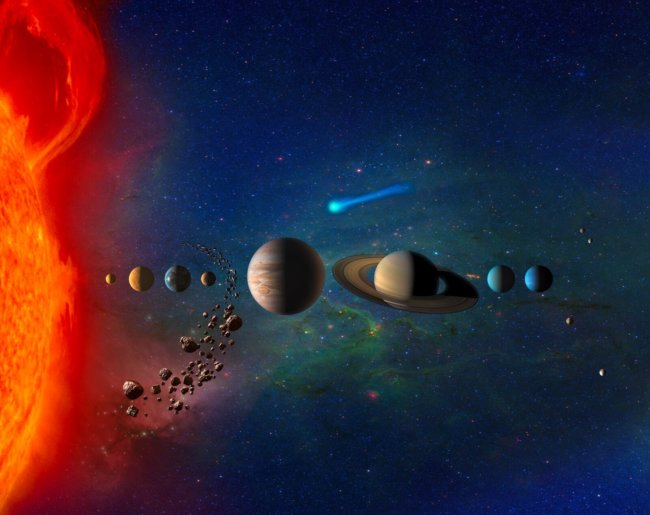
Through the use of neural networks Google space Agency NASA discovered the eighth planet, it would seem, has studied the sun-like star Kepler-90, located in 2545 light years from us. To find a “lost” managed in a database of the space telescope “Kepler”. Now, the system Kepler-90 was more like a Sun. However, only a quantitative issue, as its planets are likely uninhabitable.
Discovered exoplanet Kepler-90i is a very hot, rocky world with an average temperature of 426 degrees Celsius, making it similar to our Venus. Planet makes a complete revolution around its sun-like star for 14, 4 earth days. It is about 30 percent more Land.
“As we expected, the archival data of the telescope “Kepler” contain real treasures waiting to be that any tool or technology will unearth them,” — commented on the opening of the Paul Hertz, Director of astrophysics division, space Agency NASA.
This discovery was possible thanks to the engineer, Google AI Christopher Chalet and astronomer from the University of Texas (USA) Andrew Vanderburgh, who taught they created neural network identification of weak data in transit (where ekzoplaneta passes by its star), recorded by the telescope “Kepler”.

The sun-like star Kepler-90 in the representation of the artist
“The star system Kepler-90 is like a little mini version of the Solar system. It also, as we have a small planet located in the inner borders, and large – on the outside, although they Packed much denser. For example, an external Kepler-90h is removed from the star at 1 astronomical unit, equals the distance from earth to the Sun,” explained Andrew Vanderburgh.
Machine learning has already been used to analyze the data “Kepler”, but a new study shows that neural networks are more powerful tool in searching for weak signals of distant worlds.
Assembled over the last four years of the telescope “Kepler”, the dataset contains information on 35 000 potentially planetary signals. Automatic analysis validates the most promising of them, but the weak signals are often lost when searching by this method. Astronomers often have to actually analyze the data manually, but the volume makes this work extremely inefficient and time consuming.

To solve the problem, the researchers trained a neural network to identify the transits of the planets, using the set of 15 000 previously analyzed signals. In the conducted tests, the neural network correctly identified the true planets and false positives in 96 percent of cases. After the engineers had taught her to determine the time of transit, the researchers used the system to search for weaker signals in the system 670 stars, which already had several well-known planets. Their assumption was that systems with multiple exoplanets are the best places to search for undiscovered worlds.
Planet Kepler-90i was not the only world that was able to identify the neural network. For example, in the system of Kepler-80 she had discovered a sixth planet Earth-sized, the designation Kepler-80g.
Next, the researchers plan to use a neural network to analyze the entire database of a telescope “Kepler”, which contains information on more than 150,000 stars. Who knows what other secrets and treasures she can find. Possible thanks to a neural network that is able to more effectively analyze planetary signals we find that the Earth 2.0.
AI Goolge begins to find hidden treasures in the data telescope “Kepler”
Nikolai Khizhnyak